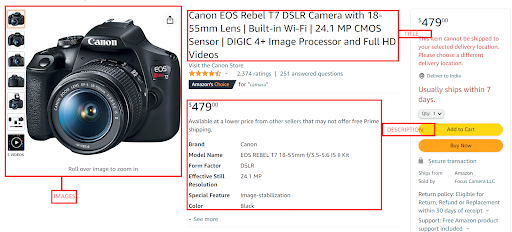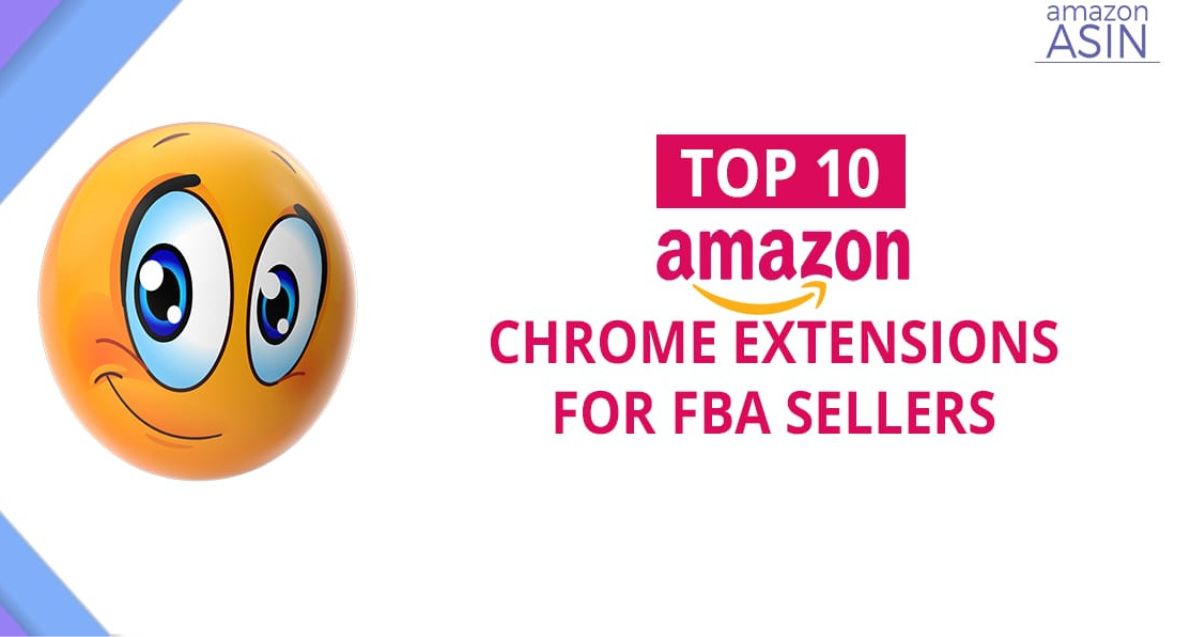In the last couple of years, E-Commerce has taken over the world. There are 3.8 billion online shoppers in the world right now. Amazon is the biggest online retailer in the global market with an estimated 300 million users. Due to the abundance of merchants, there is fierce competition to establish one’s presence.
There are several ways to promote your company online, and organic search is one of them. It’s where you connect with buyers by using common search terms. And how is that done? That is where Amazon SEO comes into play. The goal of Amazon SEO is to rank well in Amazon search results by using suitable keywords.
If you are looking for ways to increase your traffic and sales on Amazon through organic search, you are at the right place. We have put together a complete list of action points you need for better product ranking and sales growth.
Since the Amazon algorithm is constantly being updated you can always come back to this article to find all the latest and relevant material that will help boost your sales.
What is Amazon SEO?
Search Engine Optimization is a marketing practice used to optimize the performance of web pages in search results. Amazon SEO works the same way. When a person visits the platform to buy a particular product, Amazon pushes her brand or product on top of the search results page. This action leads to increased visibility, traffic, engagement, conversion, and ultimately more sales.
This unpaid, organic process relies completely on keywords and the algorithm. Millions of merchants are constantly competing for top rankings on Amazon. If you are a seller and want your products to stand out so more people will engage with your brand, you need to make sure your product page is updated and is in an optimum state.
What is A9 and How Does it Work
The Amazon algorithm is called A9. To start selling on Amazon, one must have a basic understanding of how the algorithm works. It is a system that decides which products should rank first. Amazon places the product at the top of search results when users look for items using the specified keyword.
Another point to be noted is how the brand’s sales have been performing. If your products have
- High click-through rate
- Impressions
- Ratings
- Reviews
then it is more favorable. Based on the factors mentioned above, the algorithm determines product ranking on Amazon.
What’s New in A10
Now that you know how A9 works, let us explain what A10 does. A10 is nothing but an upgraded version of the previous algorithm. The only difference between the two is that A10 focuses more on sales. Since Amazon is a business platform, its primary goal is to have a high number of sales.
The new algorithm has an improvised system that reads the intention of the user and directs them towards products that sell more often for the relevant searches. It prioritizes those items that are more likely to sell, especially through organic clicks.
What is Amazon Product Listing
Amazon Product Listing refers to the product detail page for each item you sell on Amazon. It includes the details you enter regarding the product, such as
- Title
- Description
- Backend keywords
- Images
- Videos
- Ratings
- Reviews
A customer will type in a keyword associated with the product they are looking for and then select one or more of the top results. The likelihood of your product having a high-rank increases if your product detail page includes all the required information.
As a seller, you must ensure your product listing is accurate as it plays a big role in influencing shoppers to buy your product. The goal is to show the products on the first page of search results. If your product is not listed on the first or second page, it is improbable for you to make any sales, as it is very rare for shoppers to go beyond these pages.
Major Factors for Amazon SEO Ranking
Various factors affect Amazon’s Search Engine Optimization ranking. You have to take into consideration how well your products are selling, the content you upload, customer queries, etc. The following list consists of all the factors that could determine where your products rank on the search result page.
Sales:
One of the most crucial factors in ranking in sales. Since it is a business platform, increasing sales is the key objective. Amazon examines a user’s prior search history and displays products that are connected to their earlier searches.
Price:
If a product is priced much higher than its competitors, Amazon will not rank that product.
Conversion:
If a listing has a lot of conversions for a certain keyword, Amazon tracks and ranks those products higher since they are more likely to sell.
Inventory:
A seller’s product listing gets affected if they do not have sufficient inventory. If there are no products available, buyers will move on to another listing rather than wait for them to restock.
Relevancy:
Sellers must make sure the product they are offering has relevant information that is similar to search results.
FBA:
If a seller opts for FBA, Amazon will handle storage, packing, shipping, and customer services on their behalf. This is beneficial because the service will be efficient and please customers. There is a good possibility that a satisfied customer will make another purchase in the future.
Although using Amazon FBA won’t have a direct impact on your Amazon SEO, it can help you increase sales. Customers are more likely to click on your listing and buy the product if you have registered on FBA.
How to Optimize Amazon Listing
Before diving into the specifics, we recommend you visit Amazon’s Product Listing Guidelines help page to have a better understanding of how SEO works. If you want your business to succeed, keep the following tips in mind. These measures will help you achieve good results with the product listings.
Title:
Making sure the product title includes your brand name, the function of the product, keywords, quantity, and size is the first step in optimizing your listing. Following the character limit will improve your product rank.
- Capitalize the first letter of each word and double-check your grammar.
- Don’t write promotional phrases.
- Do not add special characters like! $ ^ * { } # ~ < >
- Use numbers instead of words.
- Don’t write in all caps.

Description:
Make sure to add all information about the product in the description box. It should include features, benefits, size, color options, uses, material, quantity, ingredients, dimensions, etc.
- Do not add the brand’s email address.
- Try to place your primary or top buyer keywords in the description. (Don’t try to stuff too many keywords 🙂 )
- Include important keywords
- The images and description must line up.
- Write a clear and understandable copy.
- Make sure it looks orderly by using bullet points.
Bullet points:
A buyer will pay more attention to your text if it is written in the form of bullet points because they can rapidly scan them and acquire all the required information.

Images:
Images can make or break your sales. A high-quality image can increase traffic to your page even though it has no direct impact on SEO ranking. When adding images, keep these things in mind :
- Use only a plain white background.
- Use high-quality images with a resolution of 1000 pixels. This way, if the users zoom into the image, the quality is not compromised.
- The images must show the exact product you are selling.
- You cannot add GIFs or animation.
- Although adding product videos is optional, they have a better probability of ranking.
- If your product has variations in size or color, add images for those as well
Ratings and Reviews:
The most significant factor in a product listing is the reviews. Before making a final decision, consumers usually look into the ratings. Your sales can skyrocket if customers give your products positive ratings.
Before buying any item, the majority of the customers decide to check the reviews and ratings. If your product page has very few reviews, you could ask customers to offer feedback by sending emails or thank-you cards along with the items. If there are multiple negative reviews, understand the issue and make necessary changes.
You can even make use of the Amazon Vine program. When a customer enrolls in the program, they can request free products and share their reviews with other buyers. This helps others make informed decisions.

Questions and Queries:
You must answer questions customers ask about your product as soon as possible. Give them useful answers that will persuade them to purchase your merchandise. This demonstrates the seller’s eagerness and interest.

Backend or Hidden Keywords:
A missing keyword can negatively impact the ranking. Your products won’t be indexed if there are no keywords in the listing. For increased traffic, be sure to include all the crucial keywords in the copy.
Visit the SellerApp website if you need assistance with optimizing your product listing.
How to Optimize Keywords
The main method for using Amazon Search Engine Organization to increase traffic to your products is through keywords. Simply said, these keywords are search terms. Search terms are the words a user enters in the search bar when they want to buy a product.
The advantage of using keywords is that you can boost brand awareness, visibility, and conversions. It’s important to choose the right keywords. If you don’t, you’ll lose out on impressions and won’t rank at the top of the search results page.
Your target audience is more likely to find your products if you use relevant keywords. All the information you need regarding keywords in Amazon SEO can be found below.
What is Keyword Indexing?
Keyword Indexing is the process of making Amazon identify the keywords used in your product listings. As a seller, you must ensure that your keywords are indexed if you want to be found on Amazon. To achieve this effectively, include your keywords in the title, product description, and bullet points. When a customer searches for a product, your listing will appear if your keywords are indexed.
Types of Keywords used on Amazon
Primary Keywords also called Buyer Intent Keywords:
Also referred to as volume-based keywords, these terms have a direct impact on your ranking. It uses common, broad phrases and is based on the high search volume. They must be included in the title as they are the main terms that users will search for.
Brand Keywords:
Search terms relating to your brand or products are known as brand keywords. Your listing appears when a user enters your brand name into the search bar. This is important since it allows you to pick keywords that are specific to your brand and, as a result, have no competitors.
Short Tail Keywords:
High-volume search terms known as “short tail keywords” are typically only one to three words long. They also go by the name “head terms.” Due to the length of these keywords, they produce non-specific, broad results. For instance, if a user searches for “Black Marker,” numerous black markers from various manufacturers and for multiple applications will be displayed.
Long Tail Keywords:
In contrast to short-tail keywords, long-tail keywords are very specific and target oriented. They often contain more than three words and provide exact results. For example, if a customer enters “Black permanent marker for whiteboard,” only those products will be displayed to them.
Backend Keywords:
These are terms related to your keywords that are hidden in the backend section of the seller’s account. Its purpose is to tell Amazon’s algorithm that your products are targeting specific keywords.
If you are interested in learning more about Amazon Backend Keywords, here is a detailed article.
Common Amazon SEO Mistakes
Incomplete Keyword Research:
The most important facet of SEO is the use of keywords. Amazon carefully examines each term, and your listing’s relevance is inspected using this data. Knowing what your audience is looking for can help you decide which keywords to include in the description and title if they are related to your products.
Keyword Stuffing:
Considering how crucial keywords are for SEO, it is important to note that they should be added in moderation. Stuffing your content with too many keywords, also known as keyword stuffing, will hurt your brand’s visibility and lower your ranking in search results.
Inaccurate Description:
You will lose customers if you provide misleading and insufficient information. Make sure your descriptions accurately reflect the products you are selling. Additionally, use clear, detailed language when writing so that customers may clearly understand what they are purchasing.
Bad Picture Quality:
This is a no-brainer. High-quality product images taken from a variety of angles must be included in your advertisements. Fewer people will view the pictures if they are of poor quality. For the buyers to make an informed choice, they would prefer to know how exactly your products look.
Fewer Reviews:
One of the most frequent mistakes made by sellers is this one. The majority of consumers decide to read the reviews before taking a look at the product description. They are better able to weigh the benefits and drawbacks as a result. Hence, If your product has few reviews, your page will not appear on top of the search results.
Lack of Information About Competitors:
It is important to know your competitors and their strategies. Analyze your competitors and find out where they are lacking. It is quite beneficial to understand why another competitor is or isn’t ranking. If something is missing in their listing, you can then update your list and perform better.
Mismanaged Inventory:
It is very crucial to keep a track of your inventory. If your products are invariably out of stock, Amazon will stop showing your products to buyers. Customer satisfaction is the number one priority for Amazon, and hence waiting for products to be back in stock results in customers being dissatisfied with your service. Whereas if your products are always available, you will have more people buying your products.
Conclusion:
Whether you are a new seller or are already running your business on Amazon, these tips will help with your ranking. You now have all the knowledge required to use Amazon SEO to optimize your product listings. Follow this guide to have a successful SEO strategy for your business and sell more products.




